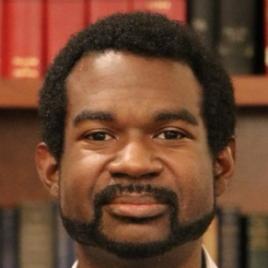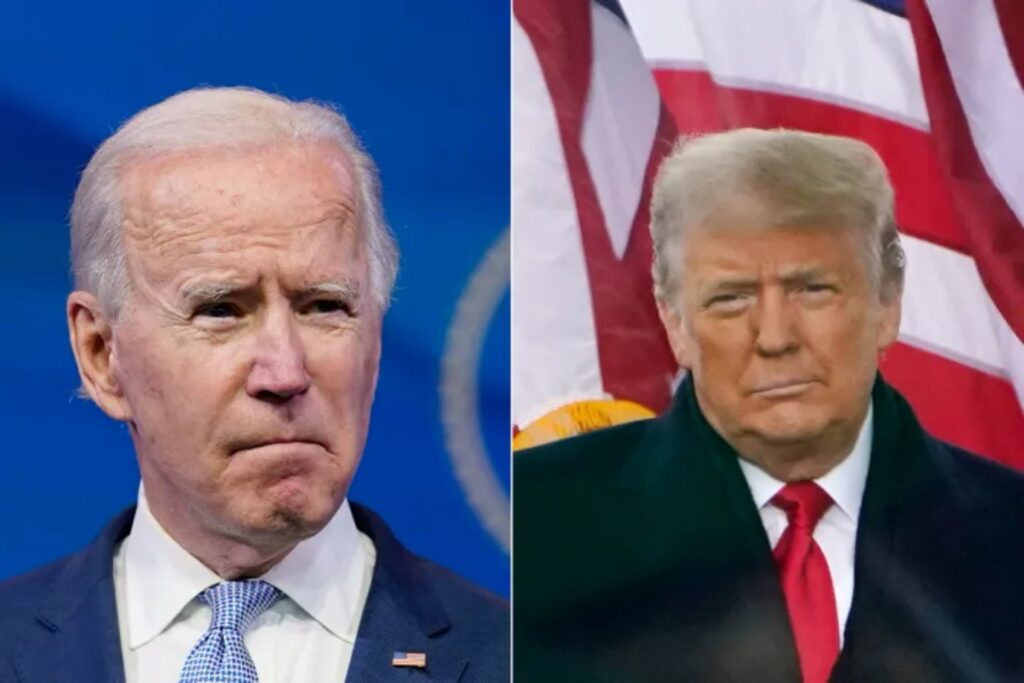Joe Biden and Donald Trump each had deeply different messages to the nation after rioters stormed the US Capitol [AP Photo] (AP Photo)
By Christopher Rhodes
In the United States, every presidential election cycle inevitably includes a set of independent/third-party candidates poised to “shake up the race”.
Some years, there is a just single upstart seeking to upend the status quo, such as Ross Perot in 1992. In others, we see a plethora of people running outside of the two big parties. The 2024 race appears to fall into the latter category. Indeed, this year, we have a very large set ranging from true independents like Professor Cornel West to established minor party candidates like Green Party stalwart Jill Stein to people on the periphery of the major parties such as former Democrat Robert Kennedy Jr.
A third party or independent candidate has never won the presidential election in the US. Throughout US history, even the most popular of third-party presidential bids achieved little other than creating a few headlines and siphoning off votes from one major party for the benefit of the other- like Nader did in 2000 or Stein in 2016.
And yet, every four years people from across the political spectrum put themselves forward as third-party/independent candidates, and a considerable number of Americans vote for them. Many others say they too would vote for third-party/independent candidates if these candidates had any real chance of winning.
There is an untapped demand in America for leadership options beyond those offered by the Democrats and the Republicans.
The two-party system in the US is almost as old as the country itself. For more than 200 years, every single American president belonged to one of the two major political groupings in the country at the time of his election – either the Federalists or the Democratic-Republicans, the Democrats or the Whigs, and since the days of Abraham Lincoln, the Democrats or the Republicans.
In this strictly two-party system, independent/third-party candidates are often seen as novelty acts – they add colour to election coverage, entertain the public with their radical plans and proposals, create the fodder for late-night monologues and Saturday Night Live sketches, and little else.
The two-party binary is such a fundamental part of the American political system that during the 1996 elections, the Simpsons famously suggested Americans would vote for an alien from space rather than a third-party candidate, spawning the “don’t blame me; I voted for Kodos” meme.
The main factor that ensures the endurance of the two-party binary in the US, even in moments when voters appear to be disillusioned with both parties, is the “first-past-the-post” voting system used in the country.
“First past the post” means the candidate/party who wins the most votes (whether that’s a majority or not) wins the election. As established by French social scientist Maurice Duverger, this electoral arrangement promotes two-party binaries like the one we see today in America for two main reasons.
First, this system in which only one candidate wins by merely having one more vote than the next highest vote-getter disincentivises minor parties from contesting elections. When three or more parties are in a race in such a system, they have a clear incentive to team up, combine their voting bases, and thereby beat their shared opponent. This logic, which generally plays out before voters ever get to cast a vote, rapidly whittles down a long list of potential parties into two blocks competing with one another election after election. Second, in first-past-the-post systems, people often hesitate to cast their vote for a minor party that chooses to contest the election alone. Even if they like a minor party’s policy proposals the best, in fear of “wasting” their vote on a party that has no chance of winning the election, they vote for the major party candidate who is most acceptable to them instead.
This logic holds up with such consistency that it’s often referred to in political science as “Duverger’s Law”. There are, however, very few universal “laws” in political science, as human beings are messy, and their behaviour is far less predictable than that of atoms or genes. Indeed, recent research has challenged the validity of Duverger’s Law in certain contexts like India or even the United Kingdom.
And even in the US, there are, of course, exceptions: a maverick who self-funds a race or two, a disillusioned party member who breaks off and has a go at it alone, or a candidate or party who cares more about bringing attention to their pet issues than winning the vote. There have even been a few instances in history in which newfound groupings managed to take advantage of extraordinary political turmoil to gain widespread support. But even in these cases, the newcomers never remained a third party and always ended up replacing one of the two major political parties of the time.
By and large, Duverger’s Law has been held in the United States throughout history and shows no sign of failing any time soon. Thus, unless there is some cataclysmic event that shakes up the current American political alignment, the only hope that politicians and voters have to break the two-party system is to change the way America conducts elections. A variety of options exist. Most notably, dozens of countries from Brazil to Germany to Turkey maintain multi-party systems through proportional representation.
Though the exact details vary, at its heart, proportional representation or PR is a system in which parties are allocated offices – seats in the legislature, for example – according to the share of votes they win in an election.
In the current American system, if a hypothetical Constitutional Party was organised and got 20 per cent of the votes in each House of Representatives race across the country, the Constitutionalists would likely lose every election, have no representation in Congress, and be forced to question their viability as a party. But under a PR system, that same vote share would grant these Constitutionalists 20 per cent of the seats in the House, a strong showing for a third party.
Other systems would also allow for more than two parties to be influential. Even a majoritarian system, which requires a winning candidate to get more than 50 per cent of the vote to avoid a run-off, allows for more parties, since getting second place in the initial vote isn’t an automatic loss.
Alexandria Ocasio-Cortez, who identifies as a Democratic Socialist but holds her seat in Congress as a Democrat, once said “In any other country, Joe Biden and I would not be in the same party.”
In the United States with a different voting system, she could run as a Social Democrat, as the equivalent party is known in several countries. Similarly, fiscally conservative but secular libertarians and socially conservative Evangelicals would be able to maintain separate parties instead of sitting under the umbrella of the GOP. Environmentalists, pro-labour voters, and other interest and advocacy groups could carve out their parties.
Such a system, of course, is not without its drawbacks. When no single party gains a majority in a multi-party system, the need to form governing coalitions leads to gridlock or frequent political turmoil. But with 10 government shutdowns occurring in the US since 1981 and several more narrowly avoided, the threat of government grinding to a halt already exists, and even when our government is working many people feel like they aren’t being represented by the output.
Reforming voting systems is not an easy task. First and foremost, the people currently in office are the people who benefitted from the current system. Reform is still possible, either as a result of public demand or if the implementation of reforms is delayed – politicians have fewer worries about changing the rules for their successors than they do for themselves. Second, few people pay attention to voting systems, and when they do, it’s usually focused on cases when their preferred candidate or party didn’t win, not the hypotheticals of what candidates or parties would have run under a different set of rules. And voters generally like the procedure to be simple, and “the candidate with the most votes wins” is a straightforward rule, consequences notwithstanding.
Nevertheless, many other countries do just fine with their more “complicated” systems, and several constituencies in the US have successfully adopted major changes to the rules of elections. Alaska and Maine currently use “ranked choice voting” or RCV for federal and state elections, in which voters assign an ordered ranking to candidates rather than simply vote for their one top choice; New York is the largest of dozens of urban areas that also use the system in some of their local elections. Furthermore, the Pew Research Center notes that several constituencies across the US have used alternative voting methods at some point in history. For example, in the first half of the 20th century, several cities used single transferable vote (STV), a version of ranked-choice voting with multi-member districts that are specifically aimed at ensuring proportional representation. The method was discontinued largely because of hostility to racial and ethnic minorities benefitting from the system, a concern that has hopefully lessened across the US since then. In recent decades, Pew notes, dozens of state and local constituencies have adopted alternative voting systems of some kind, often due to public demand.
In short, for people who may not be excited about a Biden vs Trump rematch and who are more generally disillusioned by the binary choice of Democrats or Republicans, there is hope that additional parties could become viable in the United States. But making this happen is possible not through throwing support behind third-party candidates in the existing system but by convincing or compelling those politicians already in power – generally representing the two established parties – to change the rules of how we elect candidates.

About the Author
Lecturer in Government at Harvard University and lecturer in Social Sciences at Boston University.
Dr Christopher Rhodes is a lecturer in Government at Harvard University and a lecturer in Social Sciences at Boston University. He is the author of the upcoming book Evangelical Violence: Christian Nationalism, the Great Commission and a Millennium of “Holy” Warfare and co-editor of the volume Conflict, Politics, and the Christian East: Assessing Contemporary Developments.
